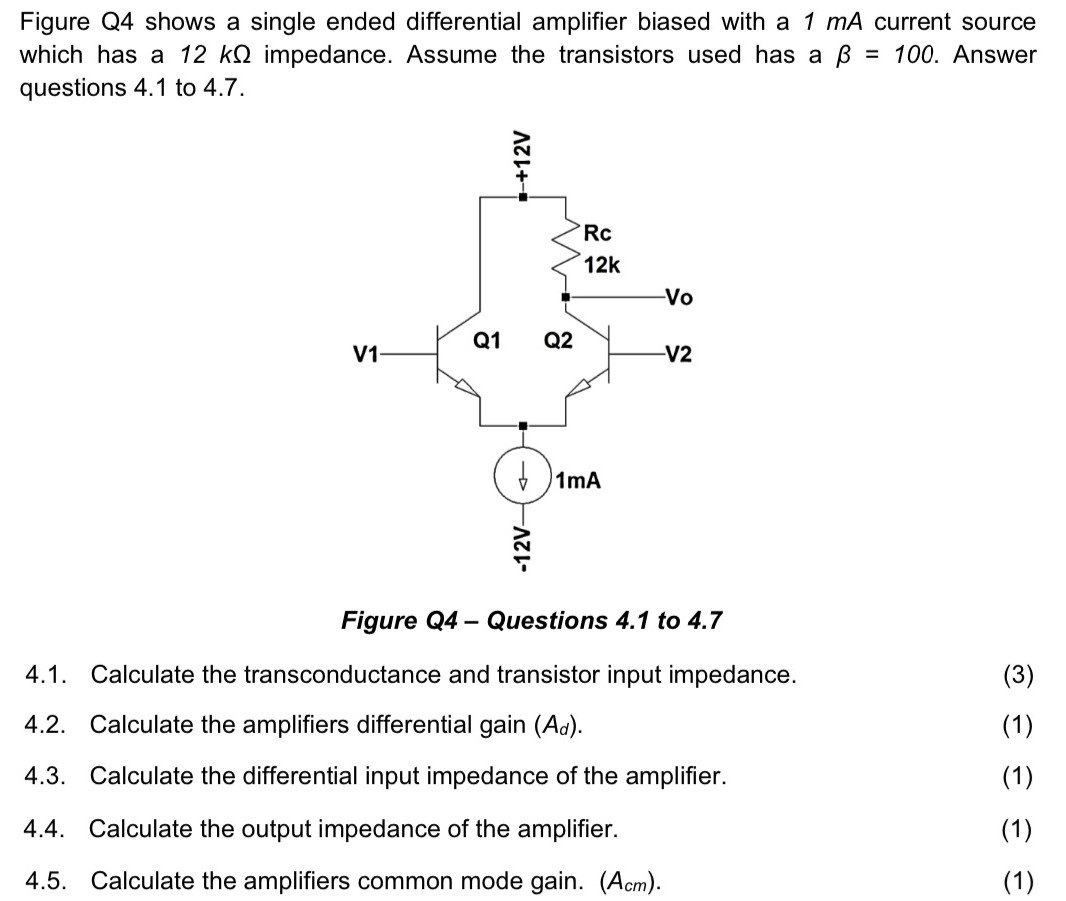Figure Q4 shows a single ended differential amplifier biased with a 1 mA current source which has a 12 kΩ impedance. Assume the transistors used has a β = 100. Answer questions 4.1 to 4.7. Figure Q4 - Questions 4.1 to 4.7 4.1. Calculate the transconductance and transistor input impedance. 4.2. Calculate the amplifiers differential gain (Ad). 4.3. Calculate the differential input impedance of the amplifier. 4.4. Calculate the output impedance of the amplifier. (1) 4.5. Calculate the amplifiers common mode gain. ( Acm).
